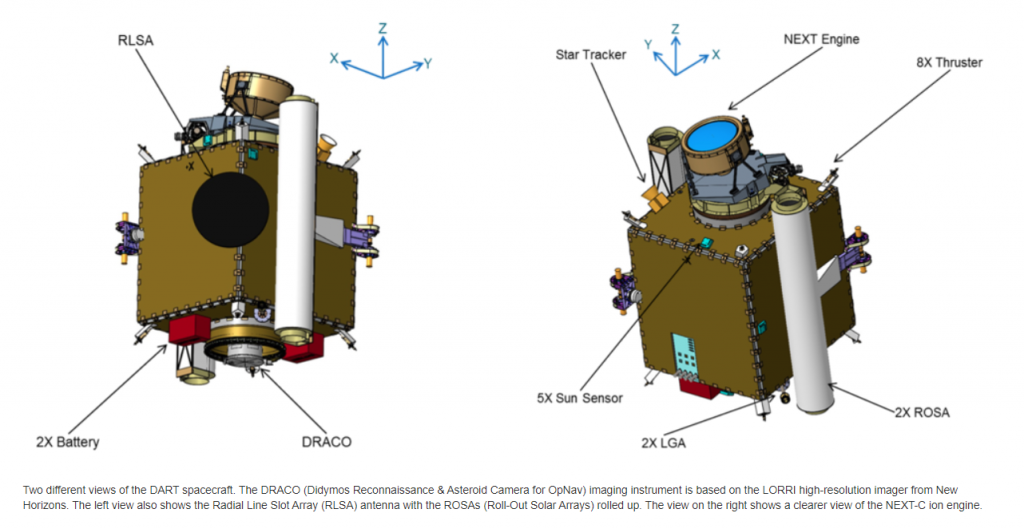NASA’s DART mission will lift off at 10:20 p.m. PT on November 23 aboard a SpaceX Falcon 9 rocket from Vandenberg Space Force Base in California.
The agency’s target is Dimorphos, a 525-foot long moon orbiting Didymos, a much larger asteroid.
The mission, a Double Asteroid Redirection Test (DART), will be the first agency’s use of the kinetic impactor technique, in which a large, high-speed spacecraft is sent into an asteroid’s path to change its motion. NASA is set to conduct the mission, what it calls “the first test for planetary defense,” on November 24, the day before Thanksgiving, to hit the binary near-Earth asteroid Didymos and its moonlet, Dimorphos.
☄️ #PlanetaryDefense at @NASA entails finding, tracking, and characterizing near-Earth #asteroids and objects. Here’s what we've found thus far. Our #DARTMission, launching this November, will also be our first test for planetary defense.
Learn more at https://t.co/1wL4ifObpp pic.twitter.com/8JryeeWQjG
— NASA Asteroid Watch (@AsteroidWatch) October 1, 2021
The asteroid is roughly 780 meters across — about 2,559 feet, according to NASA. Its moonlet is about 525 feet, which according to NASA, is “more typical of the size of asteroids that could pose the most likely significant threat to Earth.”
The DART spacecraft will crash into the moonlet nearly head-on at about 6.6 kilometers per second, a speed that’s faster than a bullet and rapid enough to change the speed of the moonlet by a fraction of 1%, NASA says. Though it appears like a small change, this impact will change the orbital period of the moonlet by several minutes.
DART will be launched aboard a SpaceX Falcon 9 rocket, but it’s not going to crash into the asteroid’s moon for another 10 months. NASA said that it will be cruising in space until September 2022, when the Didymos system is within 11 million kilometers of Earth.
https://twitter.com/AsteroidWatch/status/1436344527191695377
Source: CBSNews
Image: NASA

